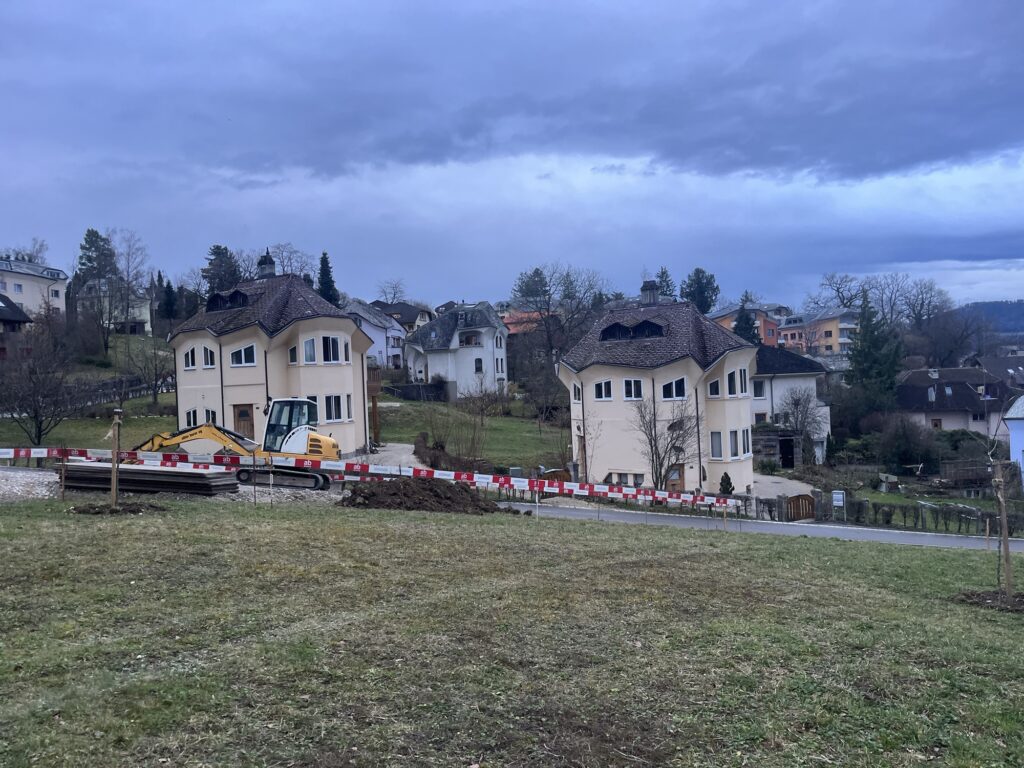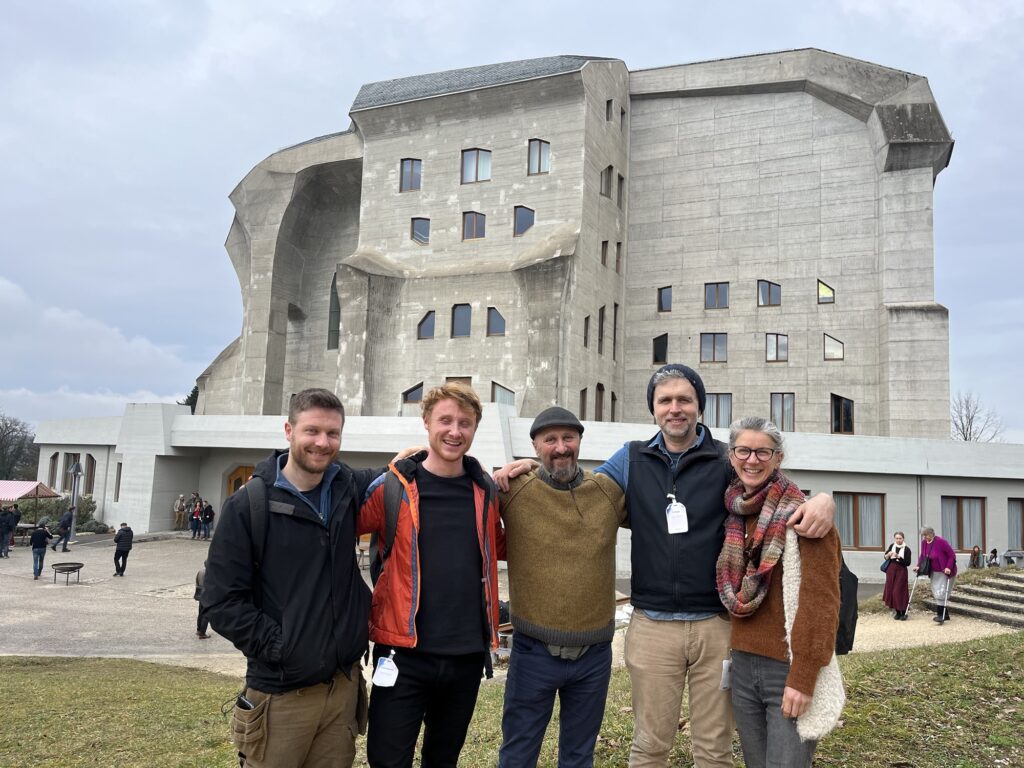In February 2024, I attended the 100th biodynamic conference at the Goetheanum in Dornach, Switzerland. Here, biodynamic farmers, educators, winemakers, community leaders, and growers met to share experiences, research, ideas, as well as to connect with one another as we look ahead to the next 100 years.
This was my first time attending the conference, and I was inspired by the number of attendees from across the world. Representatives from Asia, Africa, and Oceania showcased how biodynamics is being used to build communities, soil health, and nutrition across the globe. It demonstrates how biodynamics can be adapted to complement different cultures, religions, and traditions such as Sekem in Egypt. In May, the first African biodynamic conference will be held in Egypt. I think this marks an important moment for the movement and shows the global reach of biodynamics. After being held and nurtured in Central Europe since its founding, this year, for the first time, German speakers made up less than half the number of attendees. The program included more English-spoken lectures and workshops than ever before.
The conference was incredible. I came across many new perspectives on biodynamics that I have been digesting since.
Biodynamics is a branch of anthroposophy, and this connection was made central at the Goetheanum, which is the spiritual home of anthroposophy in the world. As part of this, biodynamics was viewed from a highly metaphysical and spiritual lens. I often find this quite challenging, and I know many farmers and growers who are uninterested in the wide anthroposophical worldview.
For me, I am open to the anthroposophical perspective and have gained some interesting concepts that I apply in my life. The idea of developing our sense organs to perceive the higher world appeals to me and helps me to focus and apply myself in a world of distractions that is often successful at holding my attention hostage. Three-fold, four-fold, seven-fold, and twelve-fold observations allow me to approach my understanding of the world in a richer way, complementing prior knowledge.
I have a predisposition to essentialism and practical work, which can make me resistant to metaphysical conceptions and knowledge that cannot be applied at once but only seek to expand upon already heavily worded concepts.
Biodynamics is exceedingly practical. It, of course, requires experience (which can only happen by doing). There are, of course, these higher concepts that I need to care for the land with greater sensitivity and consciousness. The sense organs have to be developed to understand the genius loci and the development of a thriving farm organism. To do biodynamic initially, you need land, biodynamic preparations, and an understanding of the core concepts. You need to be able to create your own fertility on the farm through composting, animal manures, and biodynamic preparations. You need to tend to the farm in harmony with the wildlife and adapt the farm to find a balance.
In the UK, and many other countries, biodynamics encounters many economic hurdles. The UK as a whole has lost its appreciation for fresh and nutritionally dense food. Taste often corresponds to nutrition, processed foods have hijacked our senses through highly palatable artificial foods, which have detrimental consequences on the individual and society. For me, the change in our appreciation for high-quality food indicates a decline in culture and society as a whole. Food has been a way of bringing people together for thousands of years and has also connected us to the land. This connection still exists in some parts of the world, but in the UK, I’m afraid that it has been broken. Biodynamics is one of the ways to revive this crucial link from seed to table, for the community.
As biodynamics is labour-intensive, it supports local farmers who have the sensitivity and skills to regenerate the land, capture carbon, and produce nutrient-dense food at the same time. This level of consciousness and true cost mean that produce comes with a greater price.
We have to acknowledge biodynamically grown food from the perspective of nutrition per pound and having a net positive biodynamic impact. Biodynamic food needs to be made more affordable by increasing the scale and number of farms. On the other hand, people need to start prioritizing how much they spend on their food once again. Ideally, by connecting with their local farmers and community-supported agricultures, or growing some of their own food.
In the UK, biodynamic farms are often complemented by a social or educational element. The farm becomes a therapeutic classroom to teach practical skills and help people find meaning and connection. I am a special needs teacher working on the land, and the compatibility of biodynamics and education is evident.
Following the conference, I feel a greater need to understand the effect of biodynamics from a biological perspective and hope to delve deeper into this world. As well as the ideas of a three-fold social order, which came up a lot during the conference and feels complementary or perhaps necessary for a thriving biodynamic community.
As a gardener, I found it challenging to stay seated for lectures and workshops when I would usually be building compost piles and moving around the garden. Luckily, the conference was followed by a trip to Bern and Rome where I was able to walk a lot to digest my thoughts and feelings from the conference. (I’m writing this from the plane as I conclude my trip.)
The conference was filled with young people, mostly from Germany and Switzerland. Also, the wisdom from the older generation of biodynamic farmers was felt. Many farmers with over 50 years of experience were a testament to a biodynamic way of life.

In the UK, biodynamics is extremely niche, comprising less than 0.1% of farmland, thus biodynamic products are also very difficult to come across, except from a handful of farm shops across the country. A few years ago, there was a UK-based online biodynamic shop selling selected biodynamic products from Europe, but this is no longer. Perhaps, there is a gap in the market, as I believe awareness and popularity in biodynamic products will start to gain more traction soon in the UK.
In Switzerland, the amount of biodynamic products in supermarkets is impressive, especially in COOP, which supports biodynamic farmers from Europe and from across the world.
Biodynamics goes beyond organic agriculture in many ways. By dragging the pursuit of excellence to the extreme periphery of agriculture, it naturally expands the use of organic and regenerative agriculture practices.
Organic agriculture does the bare minimum, which avoids the use of chemical fertilisers and pesticides. This provides us with the base. Usually, there is a propensity towards sustainability within an organic system, and especially with a regenerative organic system. Organic agriculture will sometimes still bring inputs such as organic minerals to balance soils.
An organic system goes a long way to help mitigate a plethora of environmental and nutritional problems. Biodynamics is more proactive than organic agriculture in ways that I will set out. It is for this reason that biodynamics still beckons me, and this belief was reinforced during the conference. The word ‘belief’ is probably the wrong choice. Biodynamics from an experiential perspective, such as the taste of produce, observation of a farm organism, and sense of community, these three points can be difficult to write up in a scientific study, but they are all found in a biodynamic farm and all support a better way to live between nature and culture than any alternative I have come across.

The origins of biodynamics are 100 years old, but Rudolf Steiner’s original ideas and those of practitioners since are based on more ancient principles and concepts. It can be difficult for modern people of today, in an age of smartphones and an overflow of information, to find direction and a grounding of understanding in a man who gave eight lectures on agriculture in 1924. So much has changed in the last 100 years, and still, his ideas stand firm, and almost mature like a fine wine, as they continue to resonate with us more and more as society advances, and biodynamic farmers reach out to the masses in the hope of leading the world down a new path, a path that is still unknown but brings us up and out of the descent into materialism, technology, and systemic decline where we are now.
This year marks this important time. The biodynamic impulse was sowed by Rudolf Steiner in 1924, nurtured and developed by followers such as Lili Kolisko and Pfeiffer. The roots of this plant have been growing since; the stem and the leaves have developed, and now we can start to prepare for the flowering stage, the blossoming of this holistic agriculture, when the world needs it most.
Recent Posts
Ideal Dates for Applying the Biodynamic Preparations in the Year
9th May (afternoon) - Stirring and Spraying 500 12th May (morning) - Stirring and Spraying 501 21st May (morning) - Stirring and Spraying 5015th or 6th June (afternoon) -...
What Does the Soundscape of Green Woodwork Afford for Self-regulation?
This essay is written as part of an MA in PSTE at Ruskin Mill Centre For Practice & Huddersfield University“There is music in the work and shavings dance from a well-honed...
